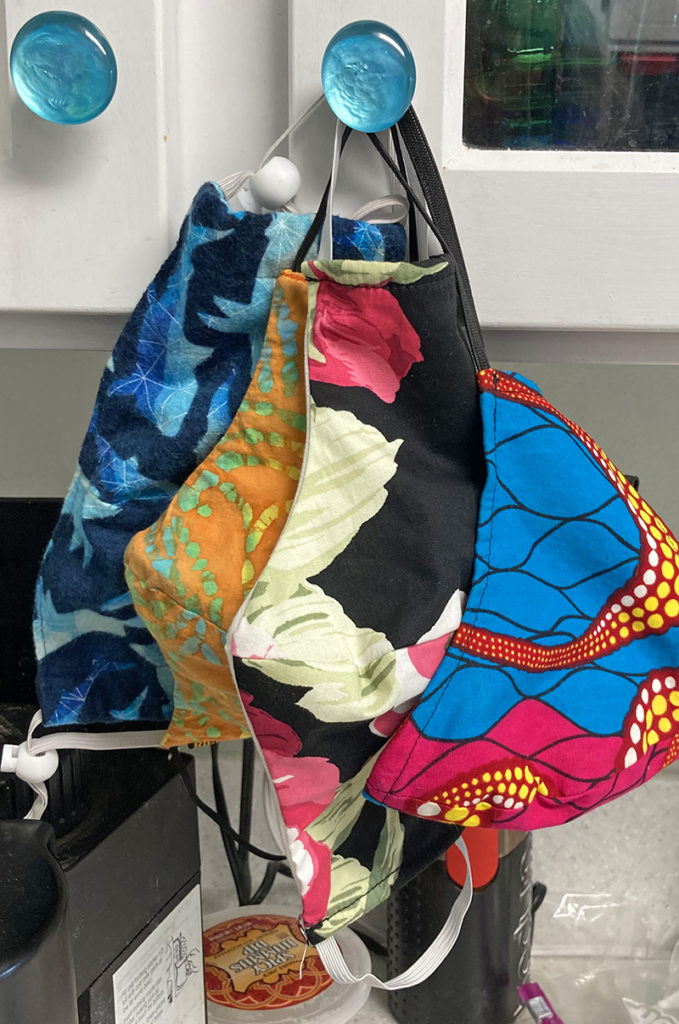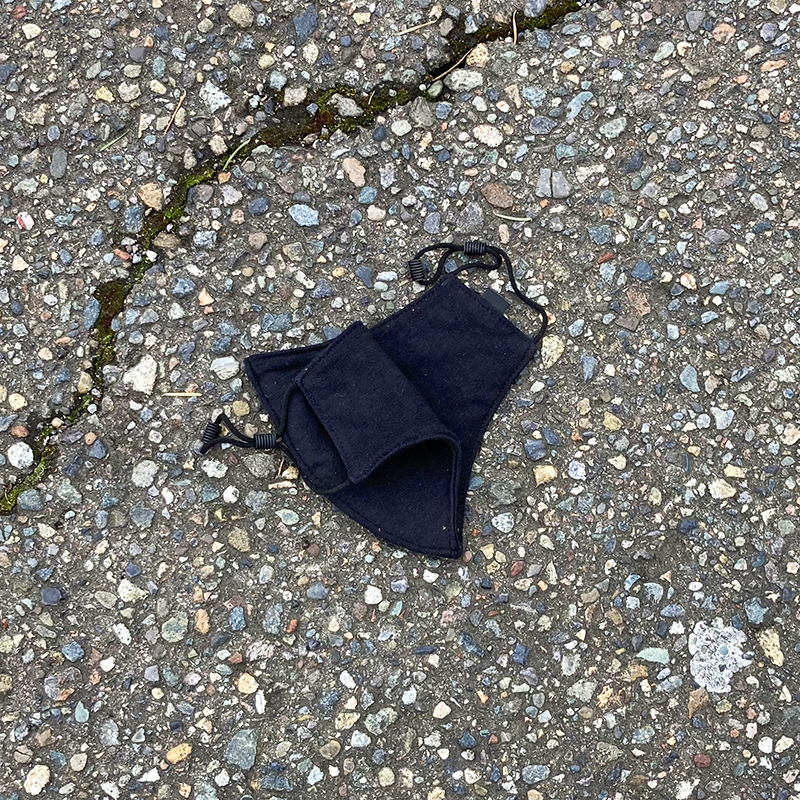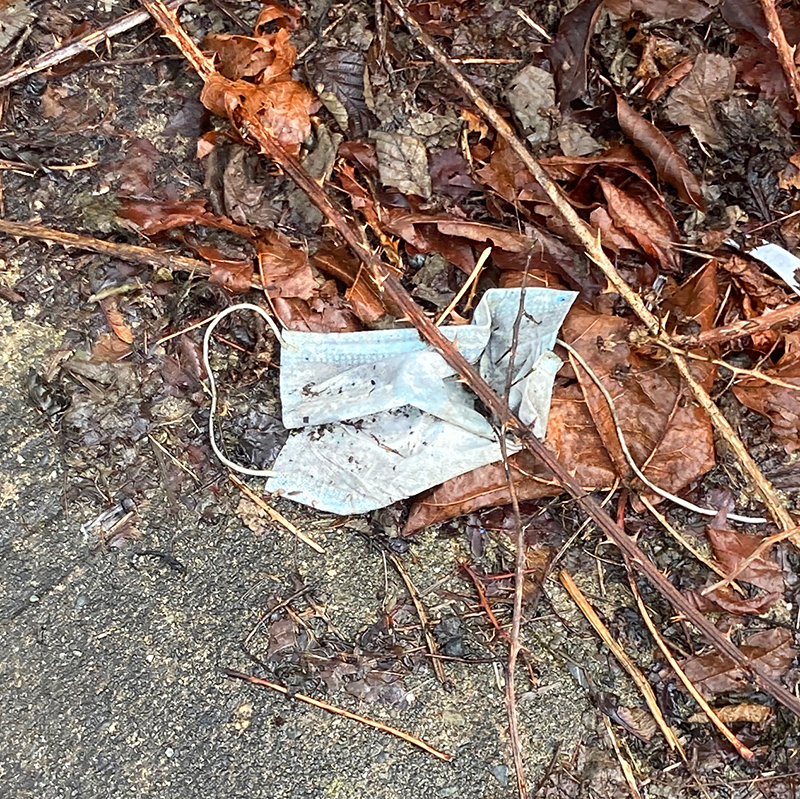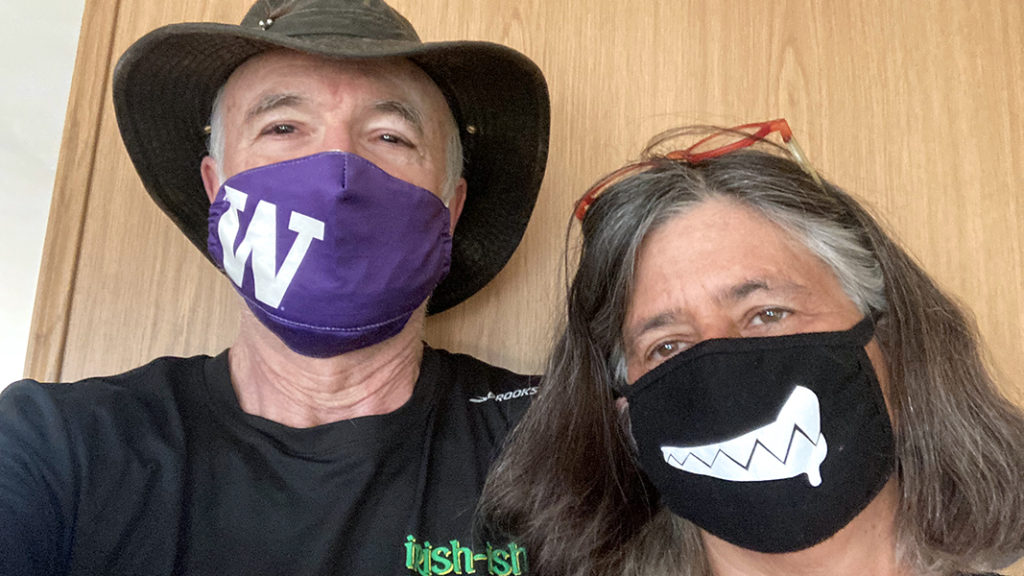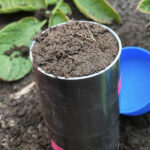 Sally Brown
Sally Brown
The first masks we got were from a colleague of my husband who lives in China. She sent us two boxes of 50 of the surgical masks. Talk about a good gift. These are disposable and have the nose guard. Of course, single use of these was an anathema in our household and so somewhere we have those boxes — likely with well over 30 masks in each.
Then for me came masks as a fashion statement. While I am rarely bold in my clothing choices, I figured with masks I could make a statement. Also as dressing the rest of my body became less of a concern, it seemed that lovely masks could take the place of dressing for success. I have a lovely batik mask, one with whales, a traditional African print, and finally a mask made by the same designer who did the masks for a Wedding of the Week in the New York Times.
More information came out. It turns out that wearing a mask that fits well and covers most of your face is much more effective than wearing the mask with the floral print that came from the wedding section in the newspaper. Also, the number of layers was a factor to consider; the more the better. My fashion masks were put to the side and a new shipment came from a store that specializes in vacuums. I figured if they can filter micro particles, they can probably figure out how to filter viruses. These became my go to masks — critical for trips to the grocery store or the post office.
Plogging For Cloth Masks
As my various shipments of masks kept arriving, my husband took a different route, one that I have now also adopted. It turns out that people lose their masks. Masks are replacing plastic bottles as the newest form of litter. Earlier on in the pandemic I wrote about plogging — picking up garbage while walking or running. Now we plog for masks. The vast number of masks that now litter our streets come in both cloth and disposable. I make a point of picking up the cloth ones. The in-house mini competition of who brings home the best ones makes that mandatory.
My favorite so far is a nice thick one with a shark on the front. Just today my husband came home with a lovely blue print one. I found a rainbow mask so I can feel supportive of both my health and the LBGTQ community. We’ve also found any number of black ones — the mask equivalent of the little black dress, i.e., perfect for every occasion. The mask I found from a dentist’s office is not so popular. I’m not sure either of us have ever worn that one. But they all hang from the pulls on our kitchen cabinets where we set them to dry after washing. All of these found masks are washed in hot soapy water, just like our purchased masks, before they go anywhere near our faces.
What About The Disposables?
I am not so good about picking up the disposable masks. Somehow touching those just creeps me out. I realize that this is something that has minimal basis in reality and that I need to get over. They are just the COVID-19 version of beer cans. The masks that you find on the street are the signature garbage of the pandemic.
The fact that they have been outside and exposed to the elements pretty much guarantees that any viral particles that might have been there are long decomposed. I addressed this in a column on COVID-19 and organics recycling as the pandemic tightened its grip on the world last April. But not everything about our reactions to COVID-19 are rational. For example, my recurrent nightmare about being somewhere in public with a naked face would fall into that irrational category.
Hopefully soon these masks will go from being mandatory to being a reminder of that dark place where we’ve been for a year now. In our business, they also will come to represent a new challenge or recycling opportunity. I wrote about the carbon impact of clothes that we buy and don’t wear last October. In that column, we came up with a clothing pyramid, similar to the recycling pyramid for food scraps.
The next challenge will be the mask pyramid. Here I am not so sure of wanting to hold onto many of these for sentimental reasons or burning them as a political statement. Hopefully vaccines will soon be available worldwide so the demand for used masks in developing countries will be less than the demand for used t-shirts. Figuring out the best end use for masks that I no longer need to keep me safe is a dilemma that I am very much looking forward to.
Sally Brown, BioCycle’s Senior Adviser, is a Research Professor in the College of the Environment at the University of Washington.



